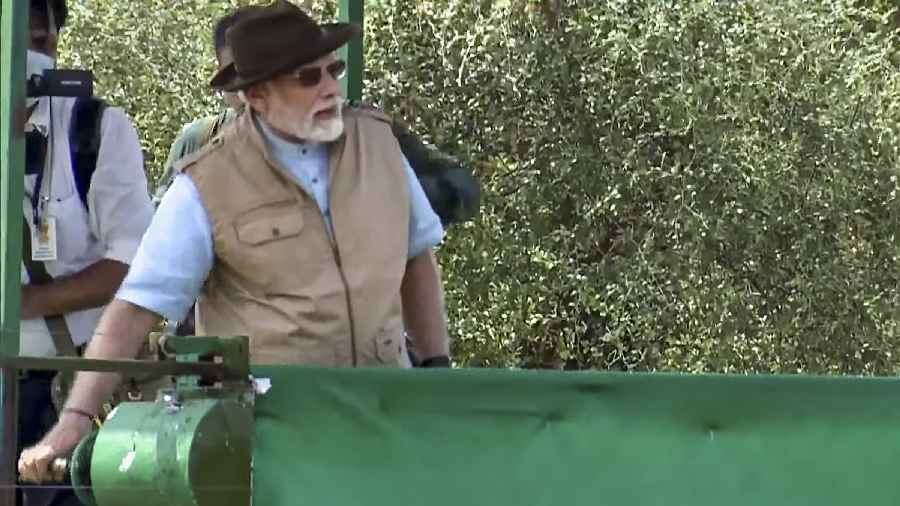In the world’s first ever intercontinental translocation of large carnivores, eight African cheetahs have been brought to India, seven decades since the spotted cat was last sighted in the country. The reintroduction of the cheetah — a decades-long effort by successive regimes — into its former habitat is being proclaimed as a major breakthrough in conservation. Perhaps that explains the associated pageantry and politics. The prime minister — the cheetahs were ‘unveiled’ on his birthday — even made the astounding claim that ecology was not in conflict with development in India. The global population of the cheetah has declined; it is estimated that only 7,100 of these felines are left in the world. The reintroduction of the cheetah to India is also aimed at resurrecting grasslands, which lie degraded even though they are essential to biodiversity.
The solemn aims notwithstanding, the Cheetah Introduction Project is not without significant concerns. Some of the attendant problems, environmentalists argue, can be attributed to the ambitious — unscientific — goals of the programme. According to the Union ministry of environment and forest, India is expected to have around 21 cheetahs in the next 15 years and would have to continue to import in order to establish a viable population. This would require intensive management and end up consuming a disproportionate volume of thinning resources. Worse, it would distract efforts from critical conservation priorities. For instance, the Kuno National Park in Madhya Pradesh — where the cats will be rehabilitated — was originally earmarked for the relocation of some of Gujarat’s lions that are vulnerable to epidemics. That was not to be, despite a Supreme Court endorsement. Strangely, the African cheetah is being prioritised over such native species — the great Indian bustard, the Indian wolf, blackbuck — whose survival is critical to the fate of India’s grasslands. And this from a government that never misses an opportunity to parrot the mantra of the local over the global. The other, long-term challenges would include the viability of the landscape — depleted grasslands are not contiguous entities — the maintainability of a healthy prey base, the narrow pool of gene stock of the imported animals, the availability of a dedicated, trained staff, and, most importantly, a steady flow of funds, among other imperatives. The success of the project would be a feather on the cap of conservation. But should not indigenous species also be given a chance?










